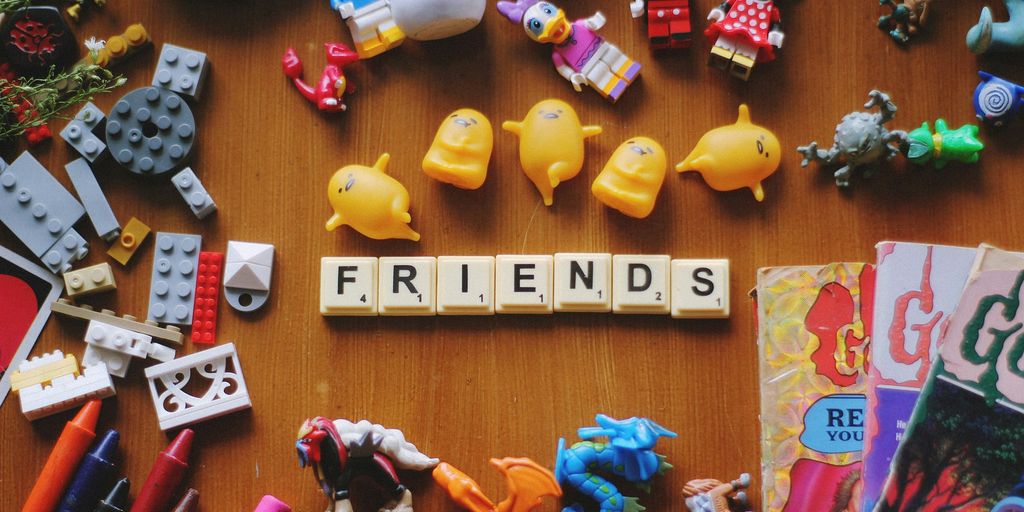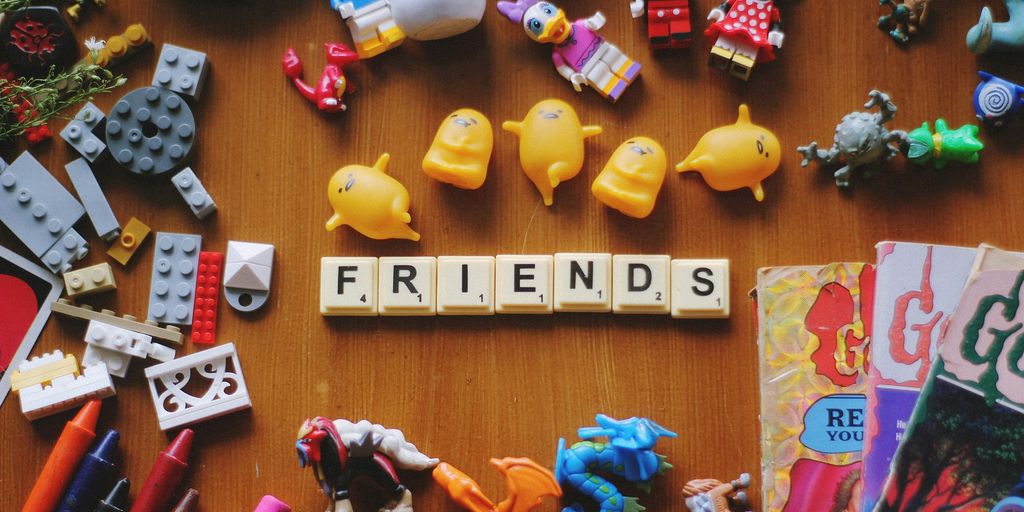
Learning can be fun and exciting for children when it involves playful activities. Engaging in educational games and crafts can spark their curiosity, enhance their understanding, and make learning enjoyable. By incorporating different methods to teach the same concepts, kids can develop stronger learning skills. Here are ten fun educational activities that will boost your child’s learning while keeping them entertained.
Key Takeaways
- Educational activities can make learning enjoyable and stress-free for kids.
- Involving children in hands-on projects like cooking and crafting fosters creativity and fine motor skills.
- Games focused on number and shape recognition help build early math skills and spatial awareness.
- Nature exploration and DIY projects encourage curiosity and a love for the environment.
- Virtual museum tours and memory games can enhance cognitive skills and critical thinking.
1. Homemade Playdough
Making homemade playdough is a fantastic way to engage your child in a fun and educational activity. Using simple ingredients like flour, salt, and water, you can create a versatile material that encourages creativity and fine motor skills.
Steps to Make Homemade Playdough
- Gather Ingredients: You’ll need flour, salt, water, and optional food coloring or essential oils for scent.
- Mix Dry Ingredients: Combine 2 cups of flour and 1 cup of salt in a large bowl.
- Add Water: Gradually add 1 cup of water while stirring until the mixture forms a dough.
- Knead the Dough: Knead the dough on a flat surface until it becomes smooth and elastic.
- Optional: Add food coloring or essential oils for extra fun.
Benefits of Homemade Playdough
- Fine Motor Skills: Manipulating the dough helps strengthen small hand muscles.
- Creativity: Kids can create shapes, letters, or objects, boosting their imagination.
- Sensory Exploration: The texture and scent of the playdough provide a rich sensory experience.
Homemade playdough is not just a craft; it’s a tool for learning and development. It offers endless possibilities for imaginative play and skill-building.
For more ideas on how to use playdough in educational activities, check out the blog on lullabyandlearn.com. You can also explore 20 playdough activities for kids that range from science and math to themed playdough fun.
2. Painting with Unconventional Tools
Painting with unconventional tools is a fantastic way to spark your child’s creativity and sensory exploration. Instead of traditional brushes, try using items like sponges, cotton swabs, or even vegetables to create unique textures and patterns.
- Sponges: Cut them into different shapes and sizes to make interesting prints.
- Cotton swabs: Great for dot painting and fine details.
- Vegetables: Use items like celery or bell peppers to stamp fun shapes.
This activity not only makes painting more exciting but also helps children think outside the box. They learn that art can be created with almost anything around them.
Let your child’s imagination run wild as they explore new ways to paint. This can be a great bonding activity and a chance to see the world through their eyes.
3. Number and Shape Recognition Games
Number and shape recognition games are a fantastic way to help children learn basic math and geometry concepts while having fun. These activities can be done with simple materials you likely already have at home. Here are a few ideas to get you started:
Counting Cups
For this game, you’ll need 11 paper cups and 55 small objects like coins or beans. Write the numbers 0 to 10 on each cup. Mix them up and ask your child to place the cups in order, from smallest to largest. Then, have them put the correct number of objects in each cup. This activity helps kids understand numbers and counting.
Shape Hunt
Create a list of shapes and have your child find objects around the house that match each shape. For example, a clock for a circle or a book for a rectangle. This game helps children recognize shapes in their environment.
Online Shape Games
There are many online games that focus on shape recognition. One such game requires students to find various shapes hidden in a picture. This simple but colorful game has two levels, making it suitable for different age groups.
Engaging in these activities can make learning shapes a delightful journey for your child.
DIY Shape Puzzles
Cut out different shapes from colored paper and then cut each shape into two or more pieces. Mix them up and have your child put the shapes back together. This activity not only helps with shape recognition but also improves fine motor skills.
Marshmallow Shapes
Use mini-marshmallows and toothpicks to build different shapes. As kids get more advanced, they can move from 2D to 3D creations. This is a delicious way to learn geometry!
By incorporating these fun and educational games into your child’s routine, you can help them develop a strong foundation in number and shape recognition.
4. Simple Cooking Projects
Cooking with kids can be a delightful and educational experience. It teaches them about nutrition and following instructions while also enhancing their fine motor skills. Here are some fun and easy cooking projects to try with your child:
- Playful Pizza: Let your child create their own pizza with various toppings. This activity encourages creativity and decision-making.
- Pancake Playtime: Make pancakes together and let your child add their favorite fruits or chocolate chips. It’s a great way to practice measuring and mixing.
- Kid’s Charcuterie Board: Arrange a variety of snacks like cheese, fruits, and crackers on a board. This can be a fun way to introduce new foods.
- Trail Mix Tastings: Mix different nuts, dried fruits, and cereals to create a custom trail mix. This is perfect for learning about different textures and flavors.
- Monster Mash Potato: Make mashed potatoes and let your child decorate them with veggies to create funny faces.
Cooking projects not only make learning fun but also help kids develop a love for healthy eating. Plus, they get to enjoy the delicious results of their hard work!
5. Nature Exploration and Crafts
Exploring nature and engaging in crafts can be a fantastic way to boost your child’s curiosity and creativity. Here are some fun activities to try:
Nature Scavenger Hunt
A scavenger hunt is a great way to teach your kids about nature and the environment. Create a list of items for them to find, like leaves, rocks, or flowers. This activity will enhance their observation skills and make them more aware of their surroundings.
Sun Printing
Sun printing is an exciting activity for kids older than 3. You’ll need special sun print paper. Place objects like flowers or leaves on the paper and expose it to the sun. After a few minutes, rinse the paper to reveal beautiful prints. This activity combines art and science, making it both fun and educational.
Nature Journal
Encourage your child to keep a nature journal. Whether you’re hiking or just exploring the backyard, have them write down or draw what they see. This helps develop their observation and writing skills while fostering a deeper appreciation for nature.
Mud Kitchen
Set up a mud kitchen in your backyard. Provide pots, pans, and utensils for your child to create their own outdoor kitchen. Mixing mud, water, and natural materials can spark their imagination and promote sensory exploration.
Cloud Gazing
Cloud gazing is a relaxing activity that can boost your child’s imagination. Lie on your back and look for shapes in the clouds. This simple activity encourages creativity and mindfulness.
Nature activities not only educate but also help children develop a love for the environment. They learn best when they are having fun and exploring the world around them.
6. Memory and Matching Games Using AlphaTUB Board
The AlphaTUB board is a fantastic tool for creating engaging memory and matching games that can be customized to your child’s age and interests. This activity enhances memory, concentration, and cognitive skills. Here are some ideas to get you started:
- Letter Matching: Customize the board with letters and have your child match uppercase and lowercase pairs.
- Number Matching: Use numbers and have your child find matching pairs or sequence them in order.
- Shape Matching: Include various shapes and ask your child to match identical shapes or find missing ones.
- Picture Matching: Add pictures of animals, fruits, or everyday objects and have your child match pairs.
The AlphaTUB board’s versatility makes it an excellent tool for tailored learning experiences, helping children develop essential skills while having fun.
Feel free to mix and match these ideas to keep the games fresh and exciting for your child.
7. DIY Bird Feeders
Creating DIY bird feeders is a fantastic way to engage kids in a fun and educational activity. This project not only sparks creativity but also teaches children about nature and wildlife.
Materials Needed
- Popsicle sticks
- String
- Recycled materials (e.g., empty milk cartons)
- Paint and brushes (optional)
Steps to Make a Popsicle Stick Bird Feeder
- Gather your materials, including popsicle sticks and string.
- Follow a simple and easy-to-follow tutorial to assemble the bird feeder.
- Optionally, paint the bird feeder to add a personal touch.
- Hang the bird feeder in a tree or near a window.
Benefits of DIY Bird Feeders
- Promotes creativity and observation skills
- Helps kids learn about different bird species
- Encourages recycling and environmental awareness
Watching birds come to feed can be a delightful experience for kids, fostering a love for nature and wildlife.
For a more comprehensive project, consider using a complete craft kit that allows kids to build and paint a bird house. This can bring a variety of different birds to your yard and make the activity even more engaging.
8. Twist and Count
Twist and Count is a fun and engaging way to help your child learn numbers and counting. This activity combines physical movement with number recognition, making it perfect for energetic kids.
Materials Needed
- A large, flat surface (like a mat or a piece of cardboard)
- Colored markers or paint
- A spinner (you can make one using a paper plate and a pencil)
Steps to Create the Game
- Prepare the Surface: Draw a grid on the mat or cardboard. Each square should be large enough for a child to place their hand or foot in it. Number the squares from 1 to 20 (or higher, depending on your child’s skill level).
- Color the Squares: Use different colors for the squares to make the game more visually appealing. This also helps in teaching color recognition.
- Create the Spinner: Divide the paper plate into sections and number them to match the squares on the grid. Attach the pencil in the center to act as the spinner.
How to Play
- Spin and Move: The child spins the spinner and moves to the corresponding numbered square. They can use their hands or feet, depending on the instructions.
- Count Aloud: Encourage your child to count out loud as they move to the square. This reinforces number recognition and counting skills.
- Add Challenges: As your child becomes more comfortable, add challenges like moving to two numbers in sequence or using only one hand or foot.
This game is a fantastic way to find unique & exciting ways for kids to explore numbers & counting! It combines physical activity with learning, making it a hit for both kids and parents.
Benefits of Twist and Count
- Physical Activity: Keeps kids active and engaged.
- Number Recognition: Helps in recognizing and remembering numbers.
- Counting Skills: Reinforces counting in a fun way.
- Color Recognition: Teaches colors along with numbers.
Explore our list of counting activities for preschoolers to make learning numbers fun. Twist and Count is just one of the many ways to introduce your child to the world of math.
9. DIY Terrarium
Creating a DIY terrarium is a fantastic hands-on activity that can teach kids about ecosystems and plant care. It’s a mini garden in a glass container that your child can design and maintain.
Materials Needed
- Clear container (glass jar or plastic container)
- Small rocks or pebbles
- Activated charcoal (optional but helps with drainage)
- Potting soil
- Small plants (succulents or moss work well)
- Decorative items (small figurines, colored sand, etc.)
Steps to Create Your Terrarium
- Layer the bottom of your container with small rocks or pebbles for drainage.
- Add a thin layer of activated charcoal to keep the terrarium fresh (optional).
- Pour in the potting soil, making sure it’s deep enough for your plants’ roots.
- Plant your small plants in the soil, arranging them as you like.
- Add decorative items to personalize your terrarium.
- Lightly water the plants, being careful not to overwater.
Watching your terrarium grow over time can be a rewarding experience for kids, teaching them responsibility and patience.
This activity is not only educational but also a fun way to unleash creativity and design a mini green oasis. Whether it’s part of a summertime science project or just a weekend craft, building a DIY terrarium is a great way to engage kids in learning about nature.
10. Virtual Museum Tours

Virtual museum tours are a fantastic way to explore history and art without leaving your home. These tours are perfect for kids of all ages and can spark curiosity and critical-thinking skills.
Benefits of Virtual Museum Tours
- Learn about different cultures and historical periods.
- Explore famous artworks and artifacts.
- Engage in interactive activities and scavenger hunts.
How to Get Started
- Choose a museum from a list of options. Some popular choices include the British Museum, the Vatican Museums, and the Met in New York City.
- Visit the museum’s website and look for their virtual tour section.
- Follow the instructions to start your tour.
Virtual museum tours can be a great way to make learning fun and interactive. They offer a unique opportunity to explore the world from the comfort of your couch.
Tips for an Engaging Experience
- Use a scavenger hunt to guide your visit and test your detective skills.
- Discuss what you see with your child to enhance their understanding and retention.
- Encourage your child to take notes or draw what they find interesting.
By incorporating virtual museum tours into your child’s learning routine, you can make education both fun and enriching.
Conclusion
Incorporating fun educational activities into your child’s daily routine can make learning an enjoyable and engaging experience. These activities not only spark curiosity but also help children grasp new concepts in a playful manner. By mixing different types of games and projects, you can cater to various learning styles and interests, ensuring that your child remains motivated and excited about learning. Remember, the goal is to create a positive and stimulating environment where education feels like an adventure. So, pick a few activities from our list and watch your child’s love for learning grow!
Frequently Asked Questions
How do educational activities benefit children?
Educational activities make learning fun and engaging, sparking curiosity and interest in kids. They help children understand concepts better and develop strong learning skills by practicing in different ways.
What are some simple cooking projects I can do with my child?
You can try making sandwiches, fruit skewers, or smoothies. These activities teach kids about nutrition, following instructions, and improve their fine motor skills.
How can I make learning about numbers and shapes fun for my child?
Create simple games like matching numbers and shapes, puzzles, or sorting activities. These games help build early math skills and spatial awareness.
What are the benefits of nature exploration and crafts for kids?
Nature exploration and crafts encourage curiosity, creativity, and appreciation for the natural world. Collecting leaves, rocks, or flowers on a nature walk can be both fun and educational.
How can virtual museum tours be educational for children?
Virtual museum tours allow kids to learn about history and art from home. They feed curiosity and critical-thinking skills, making learning interactive and engaging.
What is the alphaTUB board and how can it be used for learning?
The alphaTUB board is a tool for creating memory and matching games. Customize it with letters, numbers, shapes, or pictures to enhance your child’s memory, concentration, and cognitive skills.






